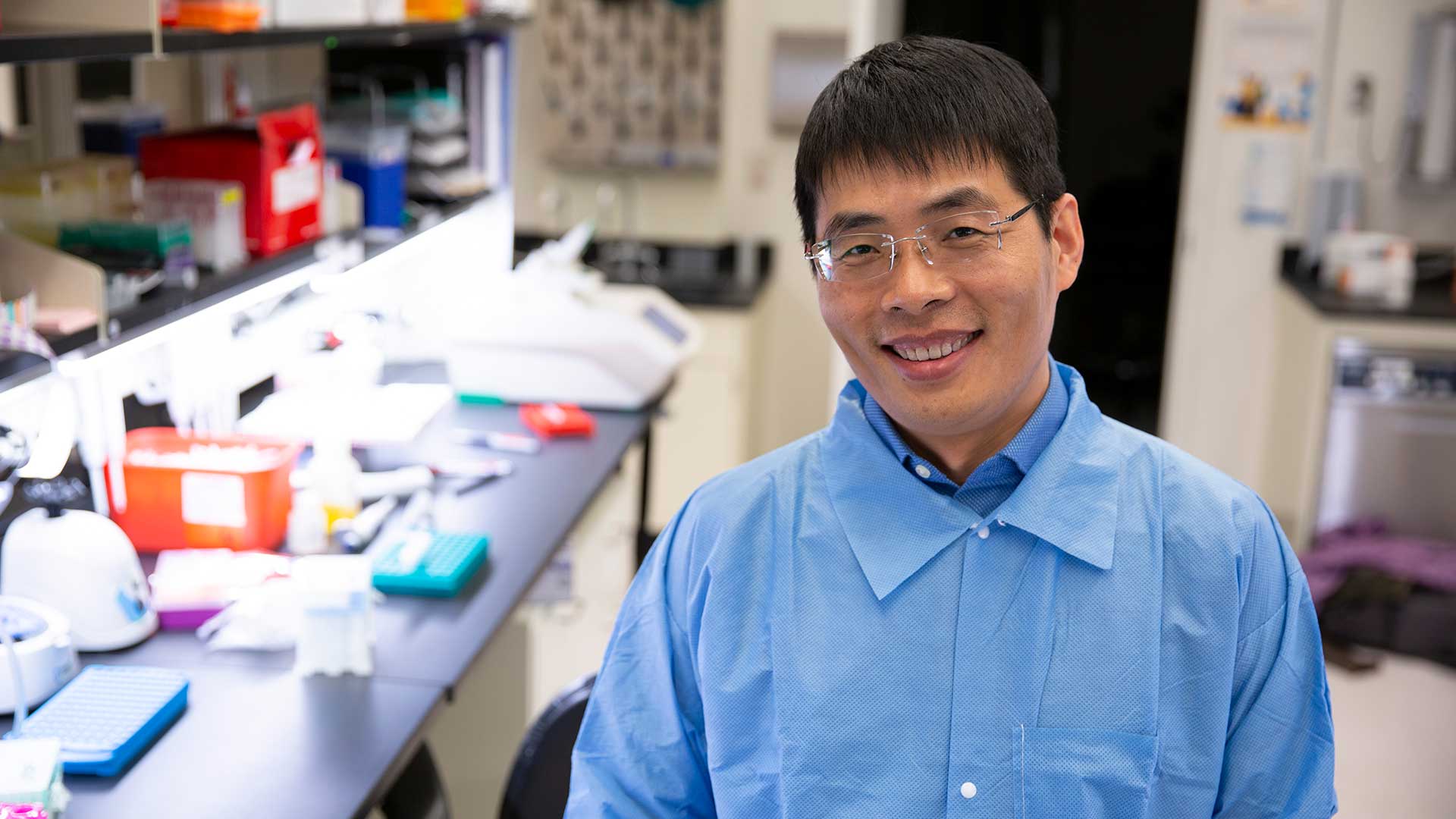
How to entertain a gene circuit without exhausting its host
ASU’s Xiaojun Tian wins NSF CAREER Award to dissect foundational problems for synthetic biology

Eleven faculty members in the Ira A. Fulton Schools of Engineering at Arizona State University have received NSF CAREER Awards in 2022.
Synthetic biology is a rapidly developing field at the frontier of science. It applies engineering methods to direct the behaviors of living systems for beneficial outcomes. For example, genes could be configured into circuits that are implanted into human body cells to guide them in detecting and combating deadly diseases.
A genetic circuit is more an abstract concept than a physical construction. One gene segment encodes or produces a particular protein that either activates or inhibits the expression or protein production of another gene segment. Continuing this sequence results in a chain of influence or inducement that functions as a circuit to drive the actions of the cell in which it is planted.
The potential of this complex design work has expanded during the past three decades into a variety of diagnostic and therapeutic applications. But current approaches to development have reached a bottleneck due to the growing size and complexity of synthetic gene circuits.
“Synthetic biologists have been designing circuits with the expectation that they function orthogonally or independently of their host cell background. But that is not the case for most of them,” says Xiaojun Tian, an assistant professor of biomedical engineering in the Ira A. Fulton Schools of Engineering at Arizona State University. “They actually steal significant amounts of resources created by the host cell for its own physiological functions, such as growth or survival. So, the circuits impose a real metabolic burden.”
Resource competition is not the only challenge. The successful growth of host cells can also cause problems. The expanding cellular environment dilutes the expression of the synthetic genes forming a circuit. It creates a feedback loop that compromises the circuit’s ability to perform as intended.
These unwanted interactions are significantly hindering the design and construction of circuits that can be applied to the synthesis of new therapeutics, the expansion of sustainable agriculture and the production of renewable resources. In order to address these contextual challenges and enable further progress, Tian is leading novel research within the School of Biological and Health Systems Engineering, one of the seven Fulton Schools at ASU.
His approach is promising enough to have won a National Science Foundation Faculty Early Career Development Program (CAREER) Award for nearly $700,000. CAREER Award recognition is reserved for young researchers who show the potential to be academic role models and advance the missions of their organizations. Awardees each receive support for five years to further their highlighted research.
Tian will devote his expertise to creating a better understanding of the molecular and cellular mechanisms that natural cells adopt to “entertain” or host synthetic gene circuits and to constrain their behavior. He and his team will develop a library of circuits to help dissect the fundamental processes at work and then develop general modeling frameworks to accurately predict behavior.
These frameworks will help create practical strategies to control circuit-host interactions and optimize functions at the level of individual cells as well as for multi-cellular populations of a single type and broader ecologies involving multiple cell types.
Of course, such complex and groundbreaking work generates surprises. Tian says observations in the lab are frequently contrary to the predictions of theoretical analysis, and each unexpected result demands troubleshooting and more testing.
“But these surprises are good things since they move us in new directions,” Tian says. “And the new directions are revealing foundational problems of circuit-host interactions.”
“These issues are faced by everyone in this field,” he adds, “so our work with underlying mechanisms can move all of us toward development of synthetic biology products that are reliable and robust enough to address many different challenges.”



































